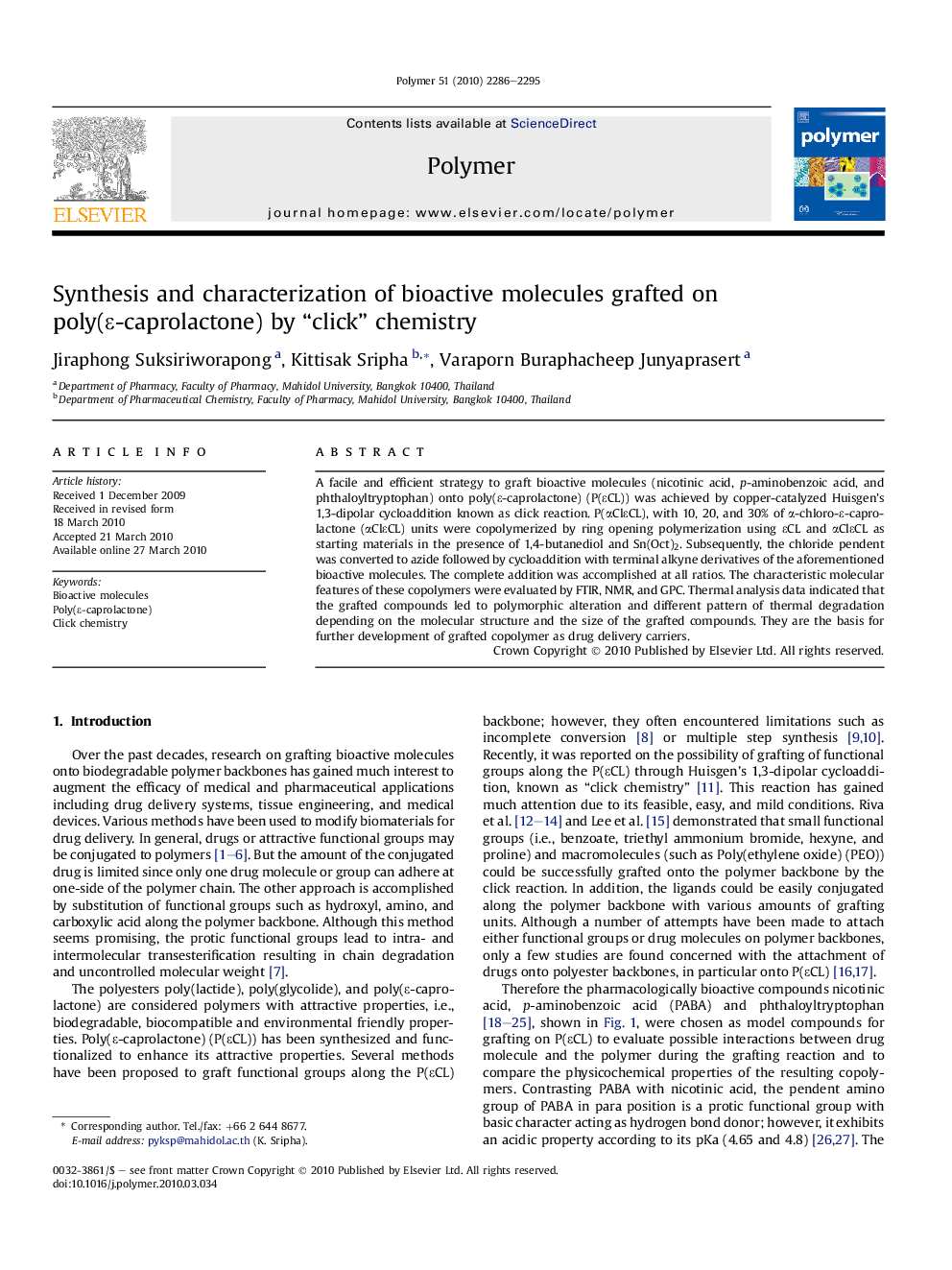| Article ID | Journal | Published Year | Pages | File Type |
|---|---|---|---|---|
| 5183764 | Polymer | 2010 | 10 Pages |
A facile and efficient strategy to graft bioactive molecules (nicotinic acid, p-aminobenzoic acid, and phthaloyltryptophan) onto poly(É-caprolactone) (P(ÉCL)) was achieved by copper-catalyzed Huisgen's 1,3-dipolar cycloaddition known as click reaction. P(αClÉCL), with 10, 20, and 30% of α-chloro-É-caprolactone (αClÉCL) units were copolymerized by ring opening polymerization using ÉCL and αClÉCL as starting materials in the presence of 1,4-butanediol and Sn(Oct)2. Subsequently, the chloride pendent was converted to azide followed by cycloaddition with terminal alkyne derivatives of the aforementioned bioactive molecules. The complete addition was accomplished at all ratios. The characteristic molecular features of these copolymers were evaluated by FTIR, NMR, and GPC. Thermal analysis data indicated that the grafted compounds led to polymorphic alteration and different pattern of thermal degradation depending on the molecular structure and the size of the grafted compounds. They are the basis for further development of grafted copolymer as drug delivery carriers.
Graphical abstractDownload full-size image
